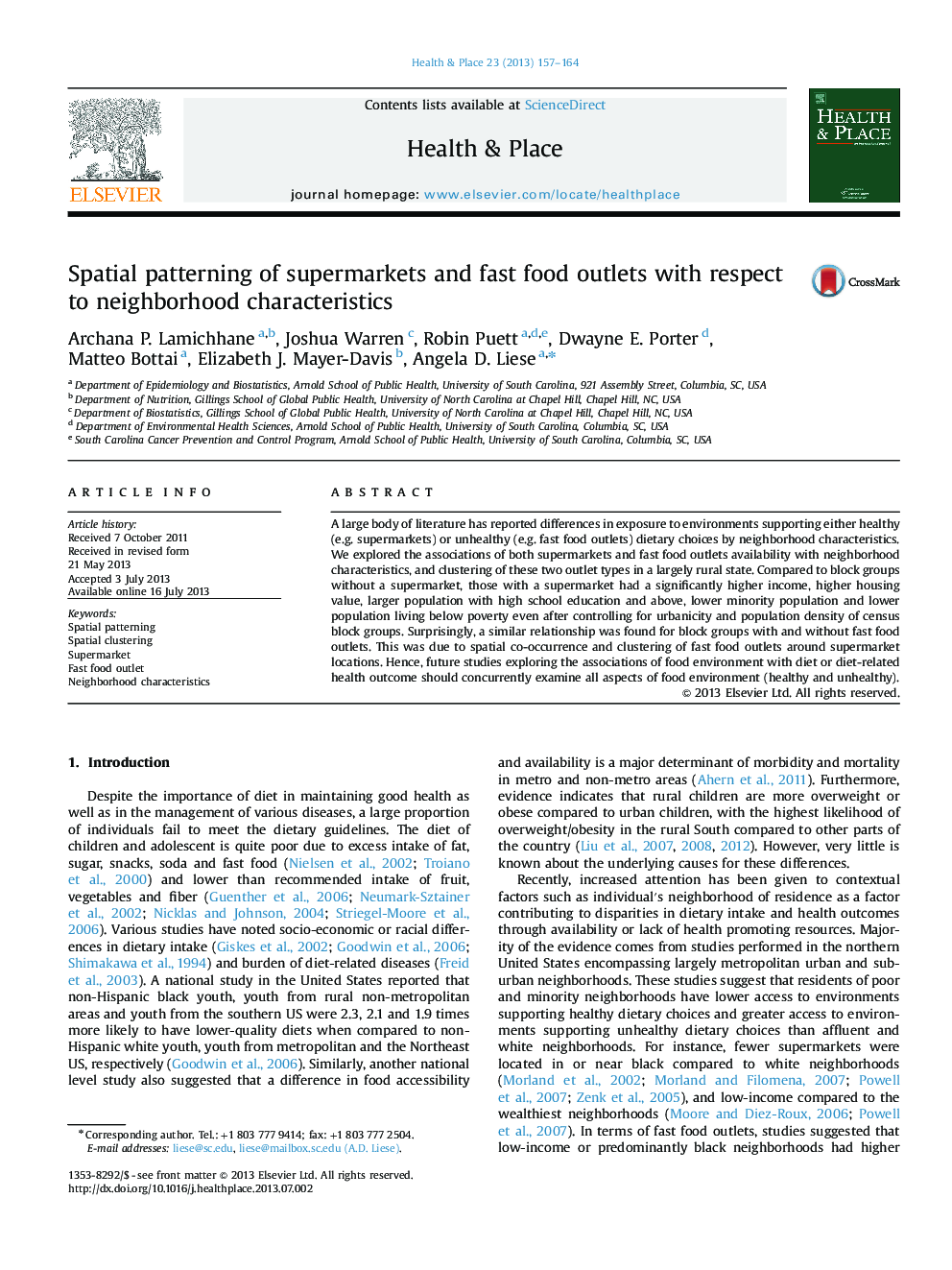| Article ID | Journal | Published Year | Pages | File Type |
|---|---|---|---|---|
| 7459019 | Health & Place | 2013 | 8 Pages |
Abstract
A large body of literature has reported differences in exposure to environments supporting either healthy (e.g. supermarkets) or unhealthy (e.g. fast food outlets) dietary choices by neighborhood characteristics. We explored the associations of both supermarkets and fast food outlets availability with neighborhood characteristics, and clustering of these two outlet types in a largely rural state. Compared to block groups without a supermarket, those with a supermarket had a significantly higher income, higher housing value, larger population with high school education and above, lower minority population and lower population living below poverty even after controlling for urbanicity and population density of census block groups. Surprisingly, a similar relationship was found for block groups with and without fast food outlets. This was due to spatial co-occurrence and clustering of fast food outlets around supermarket locations. Hence, future studies exploring the associations of food environment with diet or diet-related health outcome should concurrently examine all aspects of food environment (healthy and unhealthy).
Related Topics
Health Sciences
Medicine and Dentistry
Public Health and Health Policy
Authors
Archana P. Lamichhane, Joshua Warren, Robin Puett, Dwayne E. Porter, Matteo Bottai, Elizabeth J. Mayer-Davis, Angela D. Liese,
